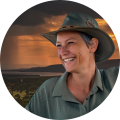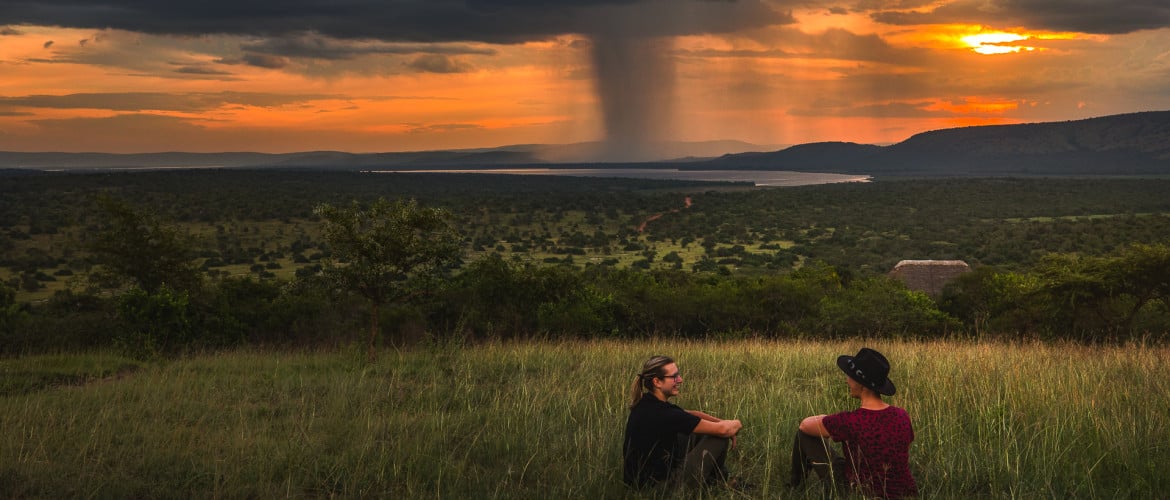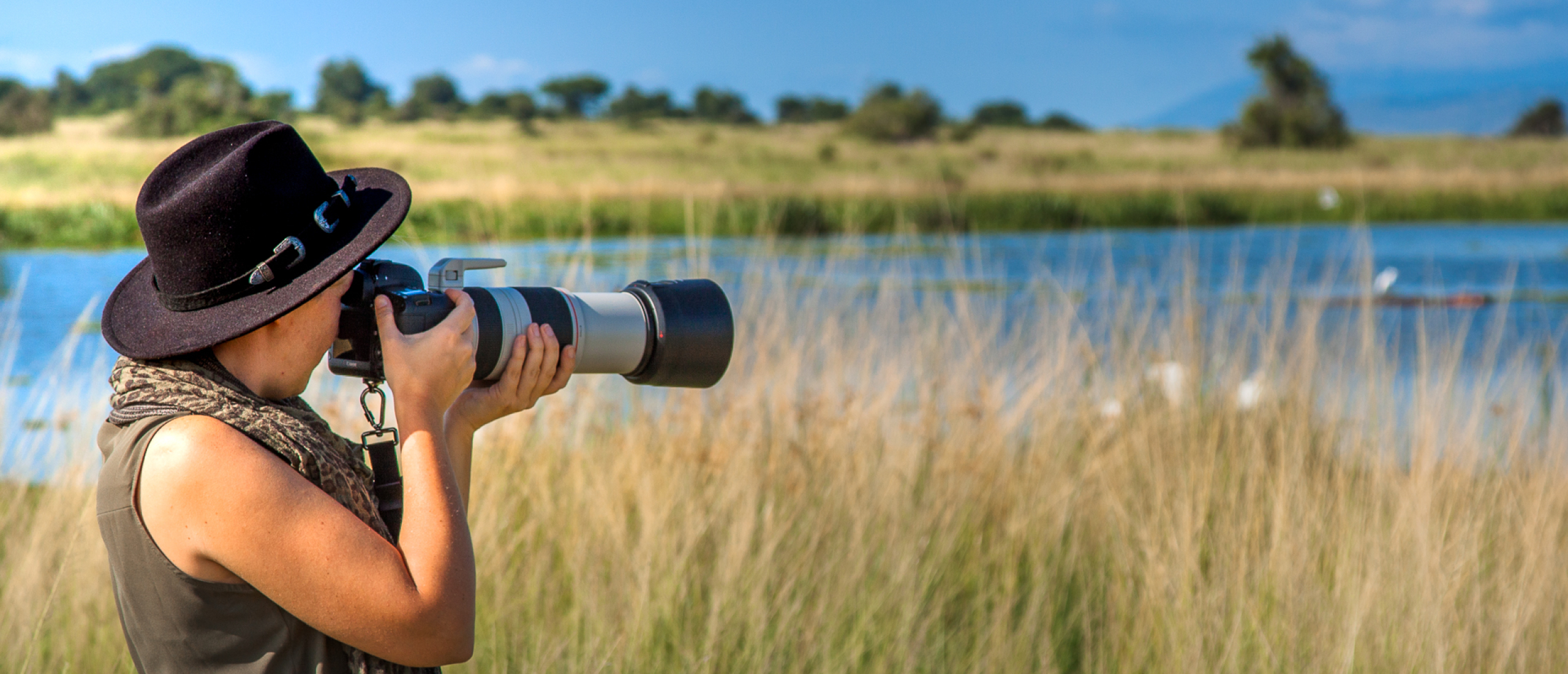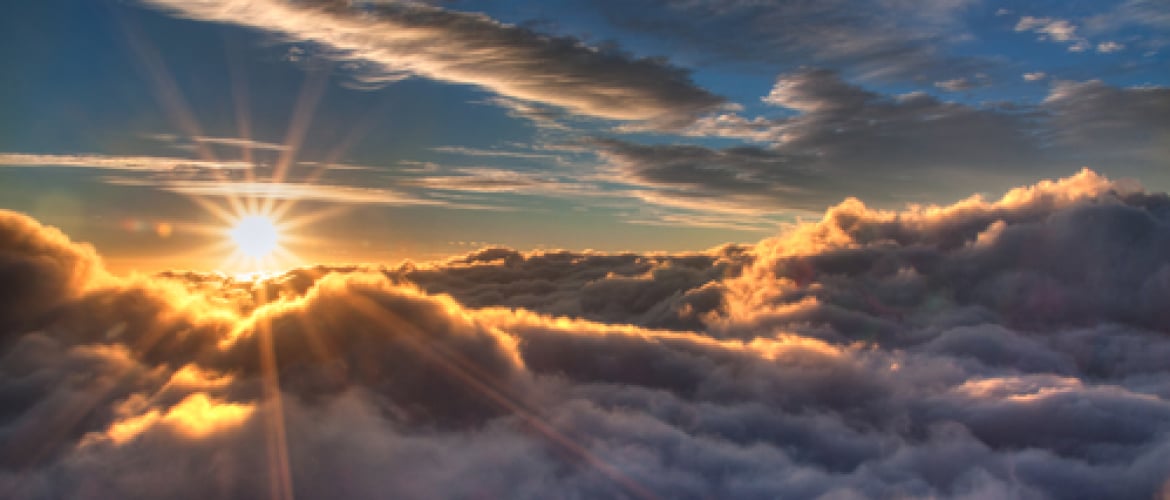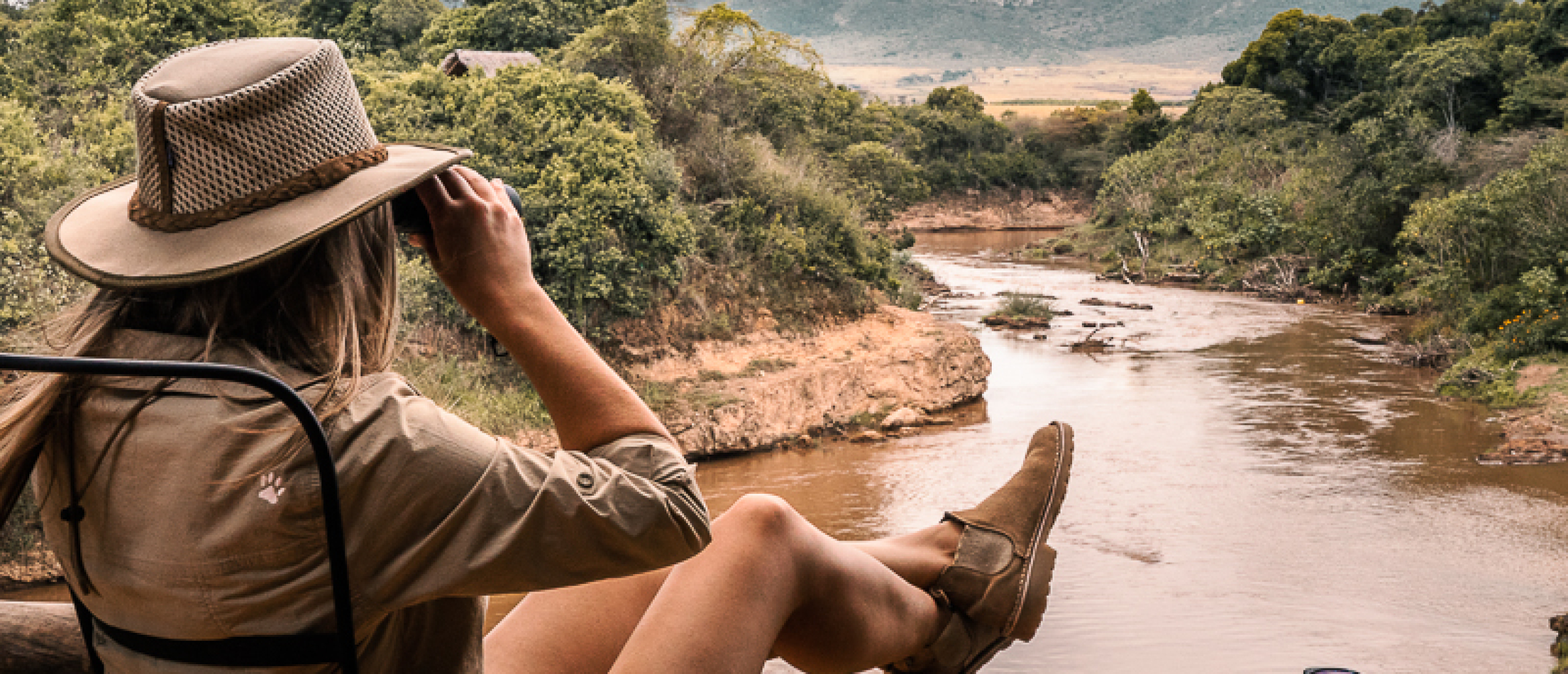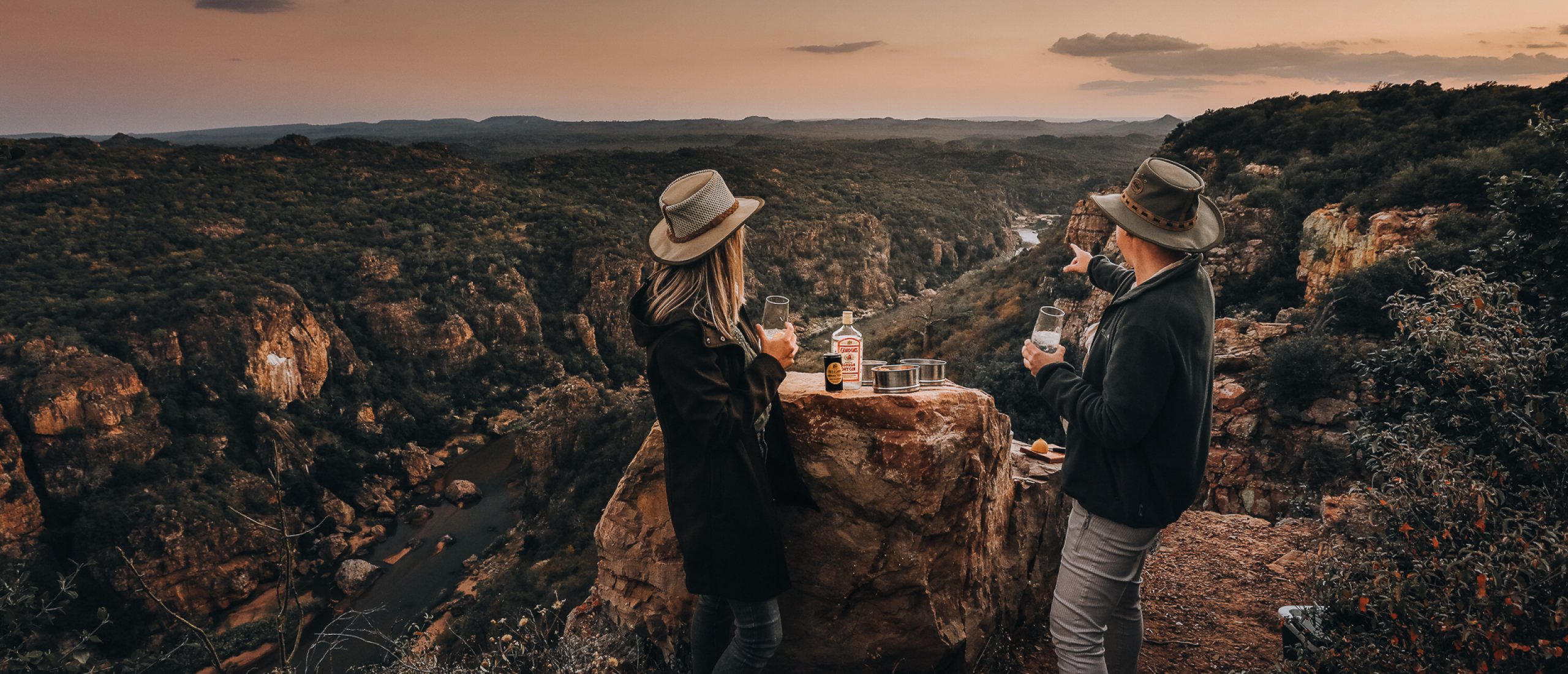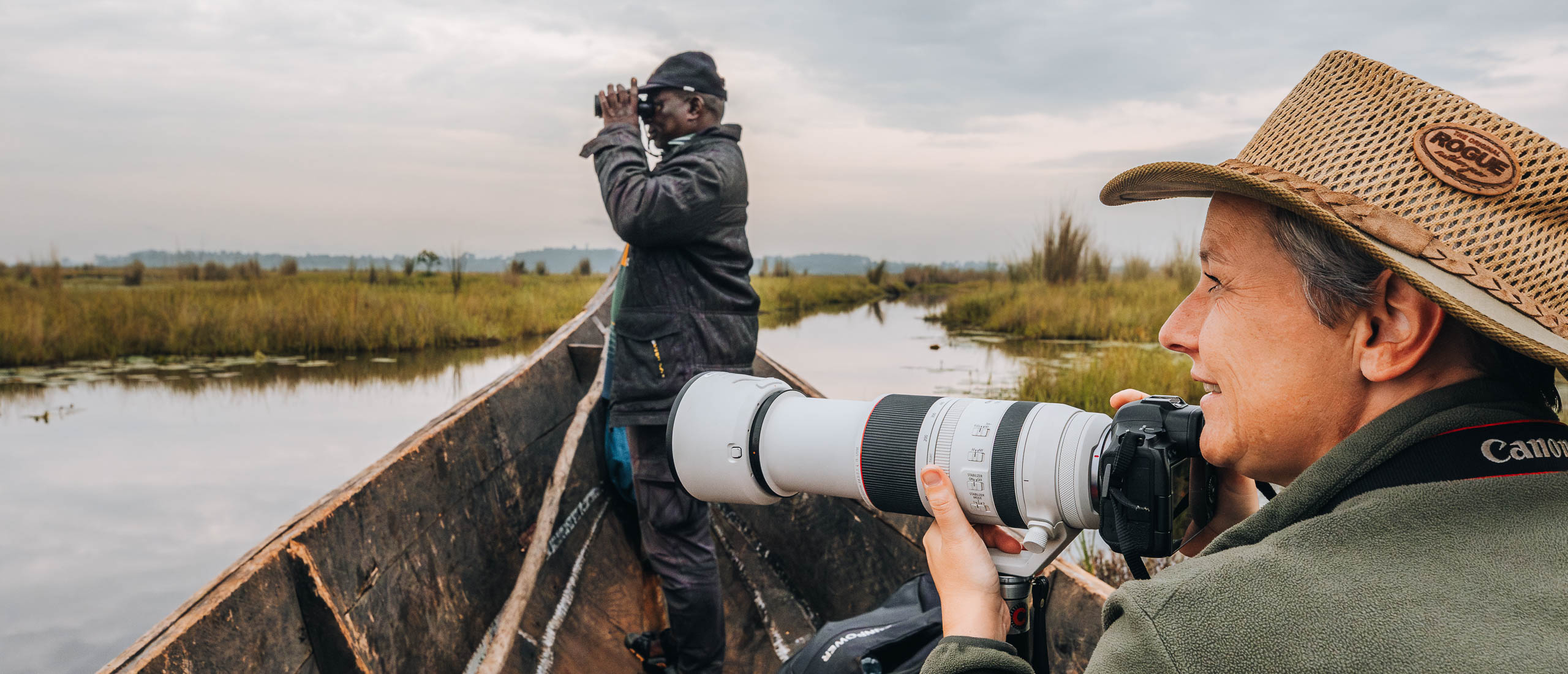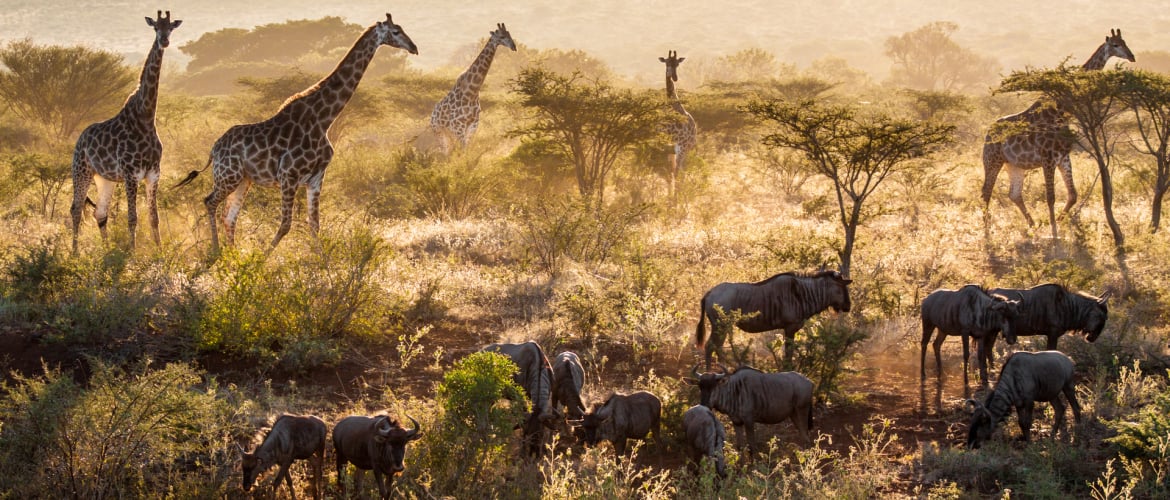
About the story, techniques, and inspiration behind the lens of creating the image – This is Africa – including valuable photography tips. Subjects are for example the location where I shot the image, the camera equipment I used, the time of the day, the lighting of the image, how I edited the image, and what inspired me to take this photo in the first place. After all, there’s somebody watching behind the lens.
Photography is an art of observation. It has little to do with the things you see and everything to do with the way you see them.
Location of the photo
This photo was taken in Thanda Game Reserve, a game reserve in KwaZulu-Natal, South Africa. Thanda Game Reserve was my home away from home in 2012 where I was a wildlife photography and conservation volunteer.
Behind the Lens: Image settings and camera equipment
I used an aperture of f/6.3, a shutter speed of 1/250s, and an ISO of 200. The image that I named ‘This is Africa’, was shot on a Canon EOS 50D camera body with an EF 75-300mm f/4-6.6 USM Lens.
Back in 2012, I owned a Canon EOS 350D, but for my volunteer experience in Africa, I borrowed my brother’s Canon EOS 50D. After I got back I upgraded my 350D to a semi-professional Canon 50D, but to date, I upgraded most of my camera stuff. Because I get a lot of questions about what camera and lenses I use while traveling, I made an overview of my photography gear collection.
Time and date of shooting the photo ‘This is Africa’
I remember we were on our afternoon game drive and our guide took us to a beautiful area of the reserve where we spotted a lot of wildlife. We arrived at a waterhole with some wildebeest and decided to stay for a bit, hoping the giraffes in the distance would come too. Finally, the giraffes arrived and we enjoyed watching them drink from the waterhole.
At the time they finished the sun started setting and the giraffes and wildebeest gathered in the African savannah to feed on grass, small plants, and acacia trees. The warm golden sunlight made this scenery just perfect and this photo turned into one of my all-time favorite images of Africa.
Sometimes taking a good photo requires a lot of patience and luck. I’m still very happy we decided to spend some time observing our subjects and the scenery. The image was taken on May 17, 2012, at 4:24 PM.
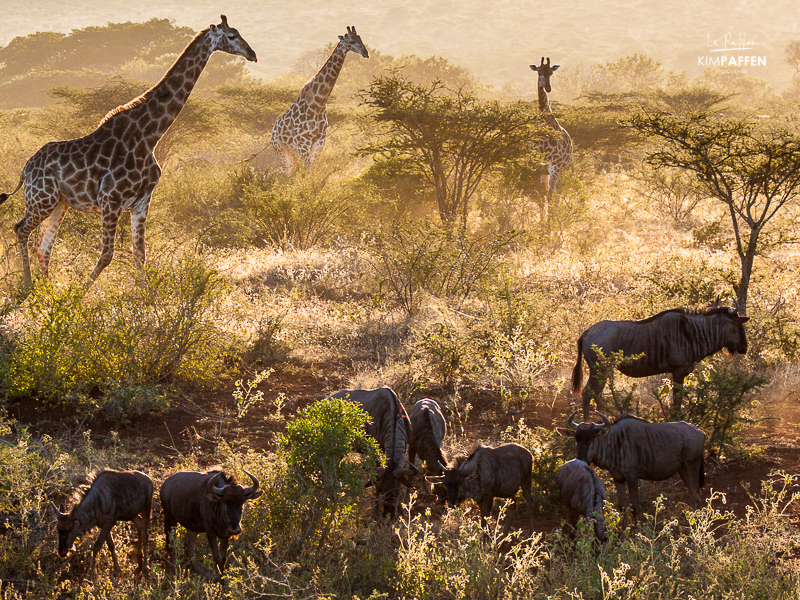
The lighting of the ‘This is Africa’ image
At the end of the day when the sun is touching the horizon, the light gets very beautiful and warm. There is nothing as magical as animals under the golden glow of the last hours of sunlight; the golden hour.
Because of the low sun, I was able to backlight the giraffes with limited harsh shadows on their face and achieve some rim light. In this photo, the light wraps around the hair of the giraffes and wildebeest which causes a golden outline of light. You’ve got to love the golden hour in Africa. The beauty of the magical hour before sunset added a calm and peaceful feeling to the image.
Photographing at dawn and dusk
To me, African dawns and dusks are the most enchanting times of the day where the indirect sunlight illuminates the land with a richer, warmer light. Shooting during that ‘golden hour’ can have a magical effect on your photographs. It occurs in the hour after sunrise and the hour before sunset. Aside from the beautiful warm tones and golden glow, the low angle of the sun is also very flattering. An overhead sun causes harsh shadows and a low sun creates a softer light quality and longer shadows which bring depth, texture, and interest to your subject or scene without losing detail in harsh shadows.
Photography tips about lighting
A great photography tip to make the most out of the time you have is to calculate the timing for the golden hour. You can find several websites on the internet to calculate sunrise, sunset, and the golden hour. For example Photopills or TPE. Another valuable photography tip is to not set your camera to auto white balance. This can neutralize the beautiful warm golden light. Setting it to ‘sunny’ or ‘cloudy’ will give you the most of the natural glow, just experiment a little with the white balance.
How I edited the photo
The RAW file needed some level of processing to do justice to the scene I photographed. First I did some basic adjustments to the highlights, shadows, contrast, exposure, clarity, and vibrance of the image. After those adjustments, there wasn’t enough detail in the white sky because of the backlight; therefore I cropped the image. By removing the sky I created a bit of a panoramic look. Normally I don’t like to crop images but in this case, the sky didn’t do justice to the scene. Last I removed a distracting electricity mast in the background. I didn’t want my and other viewer’s eye to be pulled unnecessarily to something that doesn’t enhance the composition. I used Adobe Lightroom for the basic adjustments and Adobe Photoshop for removing the electricity mast.

Behind the Lens of what inspired me to take this photo
Before I started as a photography and conservation volunteer in South Africa I didn’t know a lot about photography. In Africa, I learned the basics of photography for beginners and how to shoot in manual mode. Apart from that, I learned a lot about wildlife (photography) and the African bush.
With all this new knowledge I was constantly thinking of how to set my camera to get the perfect picture. At that moment I wasn’t thinking at all. I was enjoying the animals, the scenery, and the peaceful atmosphere of the setting sun, and I felt very connected to nature. I wanted to capture that magical moment as a lasting memory and that is what I did.
The image reflected exactly how I felt at that moment – peaceful, calm, alive, and free – and I guess that is why this image still gives me that special feeling… It makes me miss Africa a lot. Yes, This is Africa!
Story, techniques, and photography tips from behind the lens
Every photo tells a story and behind every story, there’s a storyteller. I like to share background information on how I captured a moment and what inspired me to create an image including the technical details, like camera settings. Photography is not only about techniques but also about the person behind the lens. Therefore, I will occasionally share the story behind the lens of several of my images.
Maybe, you also like Behind the lens of creating the ‘Sunrise above the clouds’ image, taken in Drakensberg (South Africa). Want to travel to South Africa yourself? Check out my Ultimate Africa Travel Guide including lots of Africa travel tips and stunning Africa photography.
Sharing is caring
Did you enjoy the story behind the lens of the ‘This is Africa’ image and was this article helpful for you? You would make me very happy by sharing this article on your social media channels, like Facebook, Twitter, or Pinterest.

